Slippery floors in the workplace can pose a serious safety hazard, leading to slip-and-fall accidents that can result in injuries and even lawsuits.
We will explore the importance of preventing slippery floors, common causes of slippery surfaces, how to identify them, and preventive measures to ensure a safe working environment.
From regular cleaning and maintenance to employee training and awareness, we will cover all the essential steps to keep your workplace floor slip-free.
Learn more about how to protect yourself and your employees from potential accidents.
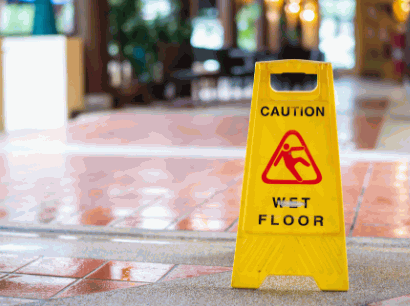
Preventing slippery floors in the workplace is essential for ensuring the safety and well-being of employees. It is vital to mitigate the risks of slips, trips and falls through effective workplace risk assessments and adherence to HSE regulations and guidelines.
Slippery floors pose a significant danger in various work environments, ranging from offices to manufacturing plants. Factors such as wet surfaces, spills, loose rugs, and inadequate lighting can all contribute to the increased risk of accidents. These hazards not only jeopardise employee safety but also have a direct impact on productivity and overall workplace morale.
By prioritising regular cleaning and maintenance, implementing anti-slip flooring solutions, and providing proper employee training, organisations can create a safer work environment. Compliance with occupational safety standards and ongoing monitoring of potential hazards are key aspects of accident prevention and ensuring a secure workplace for all.
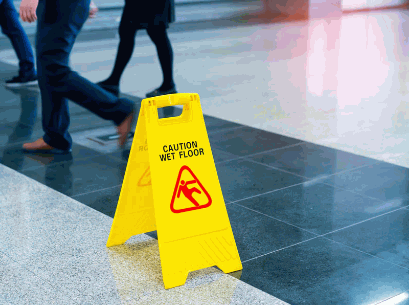
Several factors contribute to the prevalence of slippery floors in workplaces, including contamination risks, inadequate footwear, poor flooring maintenance, and various physical hazards.
Spills and leaks are common culprits behind slippery floors in the workplace, posing significant contamination risks and necessitating thorough floor testing methods to identify and address these hazards.
When spills occur, they can seep into porous surfaces, leading to potential contamination of the surrounding environment and increasing the likelihood of slip accidents.
Recommended testing procedures may involve utilising specialised equipment to detect hidden moisture levels and assess the extent of the spill, ensuring a comprehensive evaluation of the affected area.
Effective clean-up strategies, such as using absorbent materials and non-slip mats, are essential to promptly address spills and leaks, minimising the risk of accidents, and maintain a safe working environment.
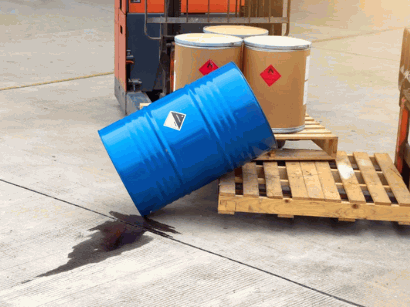
Wet surfaces are a prevalent cause of slippery floors, increasing the likelihood of slips, trips, and falls. Implementing appropriate floor testing methods can help identify areas prone to wetness and reduce the associated risks.
Regular testing is essential to monitor the moisture levels and promptly address any hazards. Alongside testing, having effective drying procedures in place is crucial to maintain safe working conditions. By using suitable preventative maintenance strategies, such as fixing leaks or upgrading drainage systems, workplaces can minimise the occurrence of wet surfaces and prevent accidents. A comprehensive approach that includes training employees on safety measures and keeping clear warning signage can further enhance accident prevention efforts.
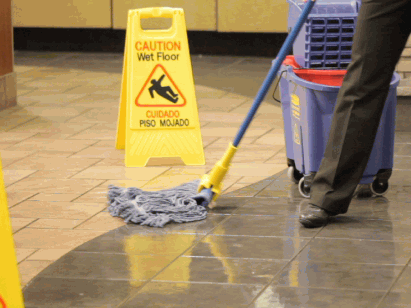
Improper cleaning practices can lead to slippery floors by leaving behind residue or contaminants that compromise traction. Conducting a comprehensive workplace risk assessment can help identify areas where improper cleaning poses contamination risks.
Following an established cleaning regime is essential to maintain a safe environment, as regular cleaning routines can prevent the build-up of dirt and grime which can increase the risk of slips and falls. By implementing proper cleaning protocols, organisations can not only enhance the longevity of their flooring but also ensure the safety of employees and visitors.
Poor traction due to inappropriate footwear choices can contribute to slippery floors in the workplace.
Ensuring employees are equipped with proper footwear is crucial for both their safety and overall workplace risk management. Slip-resistant footwear offers enhanced grip on various surfaces, reducing the likelihood of accidents and injuries caused by slips and falls. Regular risk assessments play a pivotal role in identifying potential traction issues, allowing employers to implement necessary preventive measures promptly. By combining the use of slip-resistant shoes with proactive risk evaluations, businesses can create a safer environment and minimise workplace hazards related to poor traction.
Identifying slippery floors is crucial for implementing targeted safety measures. This can be achieved by looking for wet spots, checking for residue or grease, observing foot traffic patterns, and utilising slip resistance testing.
Wet spots can often indicate areas of potential hazard, while residue or grease left behind can significantly increase the risk of slipping. By paying close attention to these visual cues, it becomes easier to spot trouble areas and take proactive steps toward creating a safer environment.
Observing foot traffic patterns can offer valuable insights into high-risk zones, such as areas with frequent spills or heavy usage. Conducting slip resistance testing further ensures that surfaces meet safety standards and helps in promptly addressing any problematic areas.
One way to identify slippery floors is to look for wet patches, as moisture accumulation can significantly increase slip risks. Employing appropriate floor testing methods can help confirm the presence of wetness and address potential contamination risks.
Wet patches on floors can result from various sources such as leaks, spills, or environmental conditions. These areas, if left unnoticed or untreated, can pose a hazard to pedestrians by causing unexpected slips and falls.
Testing methods, including moisture meters, can help measure the extent of wetness and identify areas that require immediate attention. Ensuring that floors are dry and free from moisture not only reduces the risk of accidents but also prevents the growth of mould and bacteria, which can thrive in damp environments.
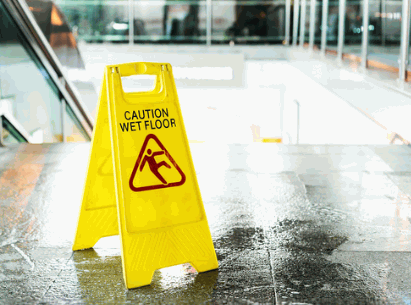
Residue or grease left on floors can create slippery surfaces that pose significant contamination risks. Incorporating thorough cleaning regime tips and conducting regular workplace risk assessments can help mitigate the dangers associated with residue build-up.
One key indicator of potential slip hazards in work environments includes the detection of residue or grease accumulation. Such substances not only compromise floor traction but also serve as red flags for inadequate cleaning practices and contamination control.
Ensuring that cleaning protocols are effective and consistent is essential to prevent accidents. It is crucial for organisations to prioritise proactive measures to address any signs of residue or grease build-up promptly to maintain a safe workplace environment.
Analysing foot traffic patterns can reveal areas of high usage that may be prone to slippery conditions.
Implementing floor testing techniques is crucial in order to evaluate the safety risks imposed by constant foot traffic in workplaces.
By conducting regular floor assessments, organisations can pinpoint potential slip hazards, which might result from heavy usage areas or physical workplace dangers.
Utilising slip resistance testing methods can provide quantitative data on floor safety levels and help identify potential slip risk factors. The GRIP rating scheme offers a standardised approach to evaluating slip resistance and implementing appropriate preventive measures.
By conducting these tests, establishments can objectively measure the slip resistance of various flooring surfaces, allowing them to proactively address any hazards that may increase the risk of slip accidents. The GRIP rating scheme not only facilitates consistent evaluations but also assists in determining the most effective strategies for improving floor safety standards. This data-driven approach enables organisations to prioritise areas that need attention, such as applying anti-slip coatings or installing slip-resistant mats in high-risk zones.
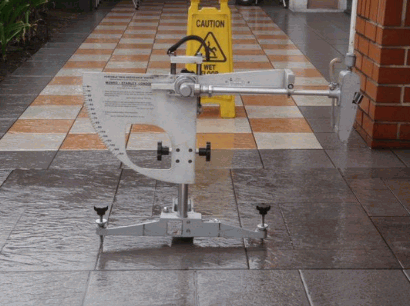
Implementing preventative measures is essential to combat slippery floors and safeguard workplace safety. These measures include regular cleaning and maintenance, using proper cleaning products, installing slip-resistant flooring, and providing adequate lighting.
Routine cleaning practices play a crucial role in preventing slippery floors by removing dirt and moisture that can contribute to hazards. Proper cleaning products, such as non-slip floor cleaners and degreasers, are vital for effectively eliminating slippery residues.
Dig deeper: Best Way To Clean Laminate Floors
Regular cleaning and maintenance routines are critical for preventing slippery floors by removing contaminants and maintaining the integrity of flooring surfaces. Incorporating effective cleaning regime tips and conducting periodic risk assessments can enhance the efficacy of these measures.
Consistent cleaning and upkeep play a vital role in reducing slip hazards within any environment, be it a workplace, commercial space, or residential area. By adhering to tailored cleaning regimes, tailored to the specific needs of the flooring materials in question, you can ensure maximum cleanliness and safety. Proactive maintenance schedules further contribute to creating a safe environment by addressing potential issues before they escalate.
Regular scrutiny of the flooring conditions through detailed risk assessments is another crucial aspect of maintaining floor safety. These assessments help identify problem areas and implement corrective actions promptly, safeguarding against slip accidents. Therefore, a comprehensive approach that combines routine cleaning, proactive maintenance, and thorough risk evaluations is essential for effective slip hazard prevention.
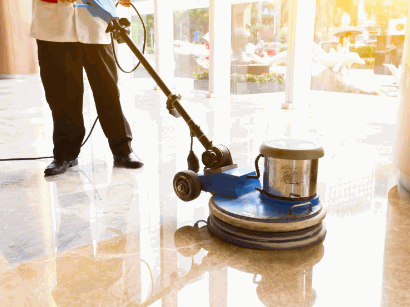
Selecting appropriate cleaning products is crucial for preventing slippery floors and minimising contamination risks. Adhering to recommended cleaning regime tips and opting for solutions that promote slip-resistant flooring properties can significantly enhance workplace safety.
Using cleaning agents specifically designed for maintaining cleanliness and safety is essential. These products are formulated to effectively target dirt, grime, and germs, ensuring a thorough cleaning process. They play a vital role in reducing the risk of slips and falls by enhancing the traction of the floor surface.
When selecting cleaning products, it is important to consider factors such as the type of flooring material, the level of foot traffic in the area, and any specific cleaning requirements. For instance, for tiled floors, using a pH-neutral cleaner is recommended to avoid damage to the surface.
Installing slip-resistant flooring is a proactive measure to prevent slippery floors and comply with HSE regulations.
The selection of appropriate materials and textures for slip-resistant flooring is crucial in minimising slip risks. Choosing materials with a high coefficient of friction and textures that provide sufficient traction can significantly reduce the chances of slips and falls in workplaces.
Adequate lighting in work environments is essential for preventing slippery floors and promoting employee safety. Conducting thorough workplace risk assessments to identify areas with insufficient lighting can guide the implementation of adequate illumination measures.
Proper lighting not only helps in reducing slip hazards but also plays a crucial role in enhancing visibility and ensuring employee safety. By conducting regular risk assessments related to lighting conditions, organisations can pinpoint areas that require improved illumination. This proactive approach allows for the implementation of appropriate lighting solutions to address potential hazards and create a safer working environment. Ensuring sufficient lighting levels not only reduces the risk of slips, trips, and falls but also boosts productivity by providing employees with a well-illuminated workspace.
Employee training and awareness programs are essential components of preventing slip accidents in the workplace. By educating employees on safety measures, and health and safety laws, and sharing injury statistics, organisations can foster a culture of safety and reduce accident risks.
Effective training modules can cover a range of topics such as proper lifting techniques, hazard identification, emergency procedures, and the correct use of safety equipment. By regularly updating training content in line with changing regulations and industry best practices, employees can stay informed and equipped to handle any potential safety hazards they may encounter in their work environment.
This continual learning process not only enhances employee performance and job satisfaction but also plays a key role in preventing workplace accidents and injuries.
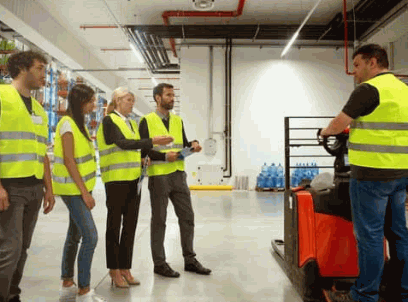
In case of a slip and fall accident, immediate actions must be taken to ensure the well-being of the individual and comply with health safety laws.
One critical step in addressing slip and fall accidents in the workplace is to promptly assess the scene for potential hazards and secure the area to prevent further incidents. Quick intervention is key to minimising potential risks and ensuring a safe environment for all employees.
Analyzing injury data from such incidents can provide valuable insights into common causes and locations of these accidents, enabling employers to implement targeted safety measures to prevent future occurrences. Data analysis plays a crucial role in identifying trends and patterns that can guide proactive safety initiatives.
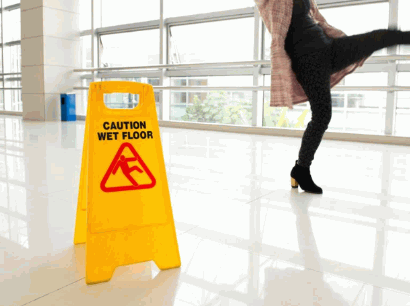
Prioritising safety in the workplace through compliance with HSE regulations, implementation of employee safety measures, and data-driven insights from injury statistics is paramount. Preventing slippery floors and reducing slip accidents require a proactive approach that integrates regulatory standards with continuous improvement strategies.
Fostering a culture of safety among employees plays a crucial role in creating a work environment where safety is ingrained in daily operations. By encouraging open communication, regular safety training, and active participation in safety programmes, organisations can give the power to their workforce to be vigilant and proactive in identifying and addressing potential hazards.
Utilising injury statistics as a tool to analyse past incidents, understand trends, and identify high-risk areas can guide targeted safety initiatives and interventions. By leveraging this data, organisations can implement effective preventive measures and allocate resources efficiently to areas with the greatest potential for accidents.